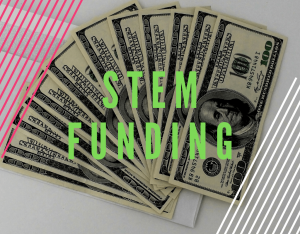Schools have been teaching math for a very long time, so why is math important in STEM? This is a question I have heard a handful of times from frustrated parents bringing their kids to the library for homework help. To make it easier for other librarians that may be asked this question from the public or anyone looking to find the answer themselves, I have decided to do some diligent research and write this helpful post.
Why is math important in STEM? Math is the foundation for science, technology, and engineering. Its work is generally used in STEM to find patterns in data. These patterns can be used to test relationships, draw general conclusions about data, and model the real world.
It is important to note that while the traditional way of teaching math on its own is indeed essential, explaining it through the STEM model is different and provides additional educational benefits. STEM is a comprehensive approach that ties the individual disciplines so that learning becomes connected, focused, relevant, and meaningful to learners.
One of the main reasons why STEM was created is because it provides the foundational skills required in an evolving global labor market. When STEM projects integrate math with science, technology, and engineering, grade-appropriate math concepts are reinforced while 21st-century skills are introduced.
Table of Contents
Math In Science
Many of us may see math and science as two separate and completely different subjects taught in as early as preschool. It is only up until when chemistry and physics are introduced where the relationship between math and science becomes apparent. What many of us may have not realized is that math has played an important role in science since the beginning.
In Earth Science, we may calculate the rate of erosion, convert Fahrenheit into Celsius, or convert the number of feet into miles. These examples show basic and minimal use of math in science and is often argued by science educators to stay that way for students not to get distracted away from science.
Math becomes more practical in science when it is used to model natural and artificial experiments to identify a problem and develop a solution for it. The scientific process requires analyzing data from trials to draw a conclusion. As we analyze data, we are using math to find the statistical correlation between the cause of an effect.
As mentioned earlier, STEM is modeled to teach the foundational skills required in an increasingly dynamic global labor market. This unchanging nature of math supports science so that global skill standards are met. This preparation helps ensure a smooth transition into the workforce.
There are plenty of examples of current science workers that use math:
- Data Scientists extract meaning from and interpret data that requires methods from statistics.
- Medical Scientists need math skills to effectively analyze data and form conclusions about how effective a potential medication is or how much can be safely prescribed.
- Biologists use math when plotting graphs to help them understand equations and when running trial and error tests with sample numbers to develop algorithms.
- Geologists use math when formulating models and scientific theories to bring together different geological phenomena.
Math In Technology
Without math, most technology would not be possible. To understand how this is true, we must first realize that technology is interwoven throughout STEM. Scientists use technology to conduct experiments and gather data. As explained earlier, the scientific process uses math when finding statistical correlations. Engineers analyze scientific data and apply math to design and create technology using existing technology.
Math is also more directly related to technology in some ways. Math is the basis of binary, and without programming, you just have the hardware. Addition, subtraction, multiplication, and division is also used in almost every program written.
Math In Engineering
When we think of engineering, many of us may think of building robots. This thought of building robots may be a good thing because building robots is a great example of how engineering brings STEM together, which math being considered the language of engineering. Engineering design supports students’ development of their problem-solving skills, which is a top priority for math teachers. Mechanical engineers analyze scientific data to design robots by applying math and using software.
What many of us may not know is that, along with mechanical engineering, there are many different types of engineering that uses math in different ways. Most engineering programs involve a concentration of study in an engineering specialty, along with courses in both mathematics and the physical and life sciences.
Electrical engineers use math to help design and test electrical equipment. They calculate amp and volt requirements for electrical projects. They also use math when creating computer simulations and designing new products.
Chemical engineers often use mathematics in the lab. Advanced computer software is used to aid in their research and production processes to model theoretical synthesis techniques and properties of chemical compounds.
Conclusion
In STEM, solutions to problems are analyzed, reasoned, and interpreted by students using their math abilities in a assortment of real-world scenarios. The focus of Common Core State Standards for Mathematical Practice (CCSSM) is on communication, problem-solving, representation, proof and reasoning, and connections—a combination of skills ideal for STEM learning. STEM presents a way for students to use the math they learn to real problems, answering the established question, “When will I ever need to use this stuff?”
The learning and teaching of math to fit into a STEM curriculum requires a shift in focus from working alone to working in teams and from working problems to find the correct answer to working issues to solve a challenge that has more than a single solution. While STEM uses an alternative approach to mathematics than many students and teachers may be familiar with, it works together with the essential shifts defined in the eight CCSS Mathematical Practice standards.



